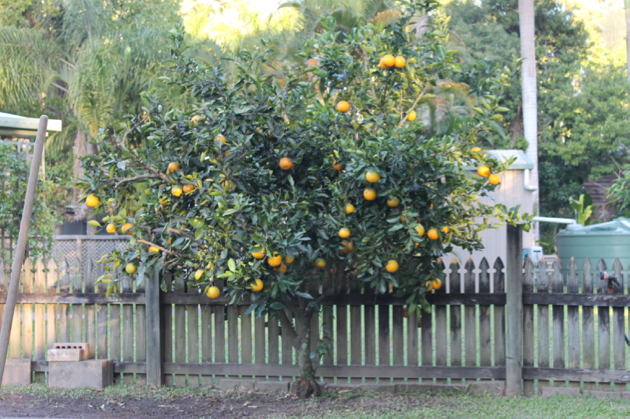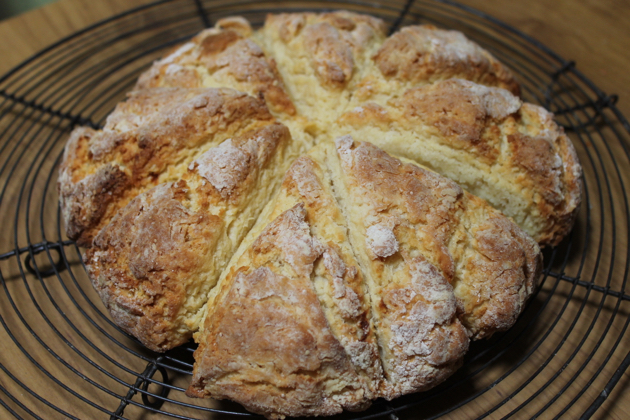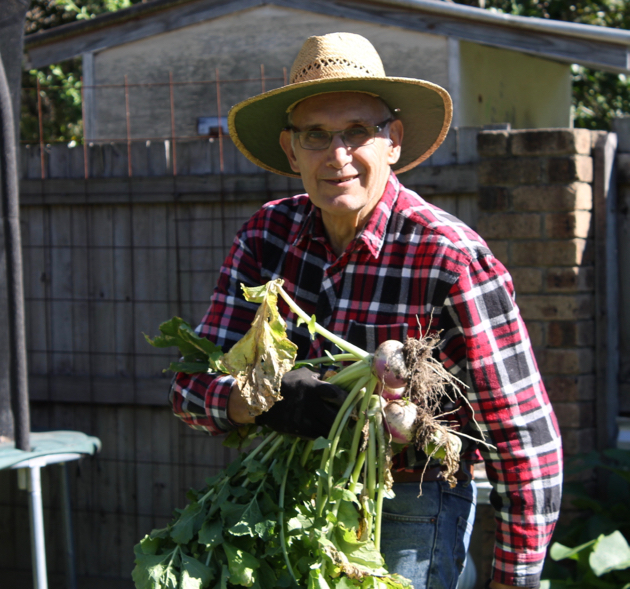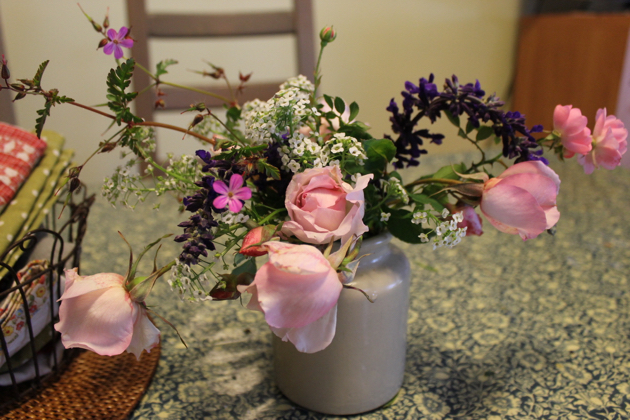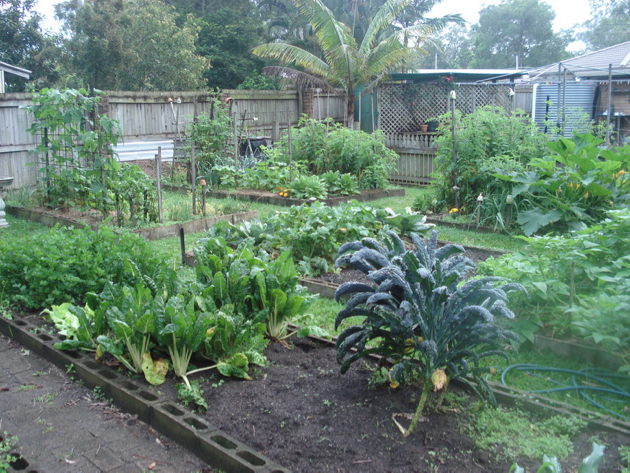We've had quite a history of fruit trees in our backyard. When we bought this place, there was a 30 year old avocado living quite happily where our vegetable garden now is. We've loved eating avocados for many years so way back then that tree was a true gift in an otherwise unremarkable backyard. It didn't last long. A few months after we moved in, the Council finally brought us into the (then) 20th century and installed sewerage in our little town. We were the first to get it and therefore we had some of the infrastructure installed out there. At one point, circa 1998, our backyard looked like the trenches of World War 1. Consequently, the avocado died. But by then we'd planted our first lemon tree, a Eureka, and when we put in the vegetable garden, we planted a Washington Navel orange and we've never looked back. Over the years there have also been mandarins and cumquats as well as many berry fruits and passionfruit. We also planted a macadamia, which is native to this area, but we soon discovered it brought rats in to eat the nuts when they fell. That was removed. We have a lovely pecan that was here when we arrived and that is still going strong. There is a mango down on the creek that we leave for the bats, a native fig and a second Eureka.
Above is the Washington Navel in the vegetable garden. It has finished its yearly crop and is putting on a lot of flowers which will be next year's fruit.
Below is one of the orange trees we moved over to the vegetable garden. It's already putting on new growth and flowers.
We also had two other navel oranges on the other side of the yard that we rarely watered. Oranges need a lot of water, so they survived but didn't thrive, unlike the one in the vegetable patch. When my nephew Danny was here a couple of months ago, I asked him to move those two orange trees over to be closer to the watering. Unfortunately, it looks like the larger tree won't make it but the smaller one is very healthy and putting on flowers.
Here is our new girl - Lane's Late Navel. She's sitting with another Eureka lemon we bought for Shane and Sarndra as a house warming gift.
One of the true joys of our garden is the fresh orange juice it gives us every year. For about three months very year - early May to late July, sweet oranges are picked to eat and juice. We were talking about it the other day and decided we'd look for another type of orange that will extend the juice season. Enter Lane's Late Navel. An Australian variety of orange very similar to the Washington Navel, which finishes cropping in early July. Lane's Late starts in July and produces through winter and sometimes into October. If all these trees grow well, we'll increase our orange season to six months and have enough oranges for marmalade, juice, eating fresh and for sharing with the rest of the family.
If you're already growing the Washington Navel, Lane's Late is an excellent sister tree. You need to be in a frost-free area and have the ability to give the trees a lot of water, so having your own water tanks would be ideal. Deep weekly watering is essential for a good crop. Don't worry about soil type. We're on clay here, but even if you have sandy soil, as long as you dig a hole at least twice as big as the root ball, then fill it with compost, good soil and manure, you'll be able to grow an orange tree.
If you have some usable land at your home but not much spare time for gardening, a fruit tree or two will give you good quality produce with very little effort and time. Fruit trees are a great investment. If you can prepare the planting hole well, locate the tree in full sun in a fairly wind-free area, for the expenditure of about $30 - $40 and a couple of hours work, you'll be rewarded with years of fresh organic citrus fruit. Make sure you give the tree plenty of water, fertilise every season with organic fertilisers - comfrey tea/mulch, chicken manure, blood and bone, sulphate of potash, and check for insects. Shape the tree to suit your land and circumstances - for instance, we lifted the skirt on our tree (see photo above) so the branches didn't touch the ground when full of fruit. When the tree isn't producing, it looks like a lovely, dark green moderate sized tree that makes the garden look beautiful. Citrus respond well to pruning so you can adjust the height or width if you need to. Prune after all the oranges have been picked and before the flowers start for the next season's crop.
This is the second Eureka lemon (being guarded by our hen Patrick). Planted two years ago, this is the ideal time to shape and prune the tree if it needed it. We'll let it grow naturally and see what it does. We only allowed a few lemons to grow this year but now the tree is full of flowers and it looks like there'll be a bumper crop early next year.
Last year we severely pruned our lemon tree when it was attacked by borers. We removed half the tree and hoped the other half would survive. This is part of this year's crop, they hung down like grapes. We're hoping for new shoots on the pruned side and while there are none there yet, I doubt it will be too long before the tree recovers and starts growing well again.
I'm looking forward to the years ahead when we might have five or six months of the year with fresh oranges coming into the kitchen every day. Think of all the whole orange cakes I can make! I might have to look around for a few more orange recipes. I encourage you to grow fruit trees, especially if you'd like to garden but don't have much time. A productive fruit tree will put your land to good use and give you fresh produce with little effort.
I need your help, friends. I'm quite happy to keep writing my blog, I enjoy the discipline of it, but now that I'm not writing as much here, when I do sit down for it, I wonder what to write. I've told you about what I do and although I suppose I could write on these topics again with the benefit of a few years more experience, but unless I change what I do or think of something new, I'm not sure I want to repeat it all.
UPDATE: Comments are closed.
Thanks everyone. I'm closing the comments here because I have a lot of feedback. Thanks to all who contributed.
- - - ♥︎|♥︎|♥︎ - - -
I need your help, friends. I'm quite happy to keep writing my blog, I enjoy the discipline of it, but now that I'm not writing as much here, when I do sit down for it, I wonder what to write. I've told you about what I do and although I suppose I could write on these topics again with the benefit of a few years more experience, but unless I change what I do or think of something new, I'm not sure I want to repeat it all.
UPDATE: Comments are closed.
Thanks everyone. I'm closing the comments here because I have a lot of feedback. Thanks to all who contributed.




